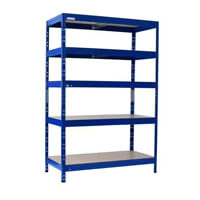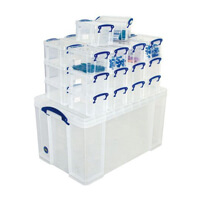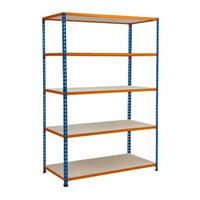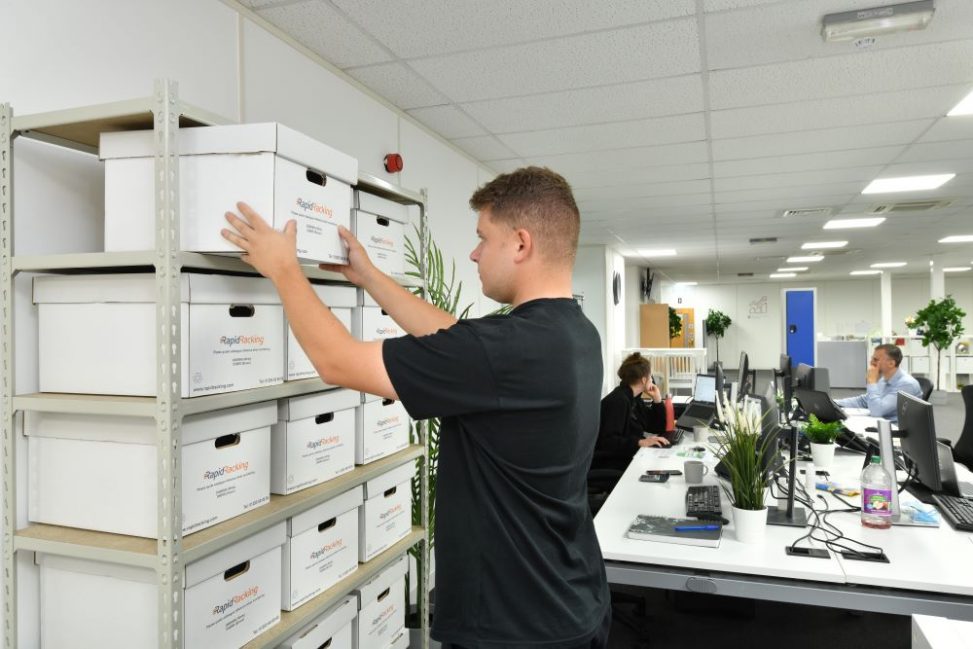On the first week of August, it’s “Simplify Your Life Week”. And as storage specialists, we can certainly help with this endeavor.
At Rapid Racking, we understand how organising your storage spaces can help optimise working efficiency, reduce stress, and increase safety measures.
As we prepare for Autumn, businesses will need to start pre-empting storage for un-sold stock and designated areas for new inventory. The best way to do this? Organise your shelving!
We’re sharing 10 ways you can effectively simplify your shelving solutions:
1. Determine the type of products that will be stored:
Before organising your shelving storage, identify the type of products that will be stored. Consider the size, weight, fragility, and frequency of use of the products.
2. Categorise products:
Categorise products based on their similarities. For instance, group similar products together to create clear sections of your shelving storage.
3. Use uniform containers:
Use uniform containers to store your products on the shelves. This can make it easy to stack products and also help you in calculating the amount of space available for each type of product.
4. Label shelves and containers:
Label each section of the shelving storage to clearly identify what is stored in each location. Additionally, use shelf labels or storage box labels to indicate the contents of the container. Clearly identifying the contents of the shelf helps employees quickly and easily locate products, which can improve picking efficiency.
5. Organise by frequency of use:
Organise products by the frequency of use, where products that are used more often are placed on lower shelves, and products that are used less frequently are placed on higher shelves. Invest in safe stools when picking on higher shelves.
6. Maximise vertical space:
Maximise vertical space by using stackable containers, and by installing shelving units that are tall. This will help maximise storage space and minimise the floor space required. Be sure your shelving doesn’t require stability bracing if not placing against a wall.
7. Implement an inventory management system:
Implement an inventory management system to track the stock level of each product, and the location of each item. An inventory management system helps you quickly identify which products are in stock and where they are located, saving time and improving efficiency.
8. Routinely assess and rearrange your inventory:
Routinely assess your inventory to ensure that products are correctly stored on the proper shelves and in the right container. Regularly reassessing the organization of your shelving storage can reveal inefficient areas, and provide opportunities for improvement.
9. Train your employees:
Train all employees who will be working with the shelving storage system, emphasising the importance of accurate labelling, product categorisation, and inventory management. Make sure that everyone understands any specific safety measures required for handling heavy or fragile products.
10. Maintain cleanliness:
Keep your shelving storage area clean and well-maintained – a storage organiser will really help with this. Regularly remove empty containers and boxes and dispose of them properly. Performing regular cleaning and removal of any debris will improve organisation and reduce the risk of damage or accidents.
Are you using the correct shelving material for your storage?
It is important to choose the right shelving material for your storage solutions and environment because different materials have different strength and durability properties, making them suitable for specific uses and environments.
It’s important to make sure you are storing your goods on a compatible material.
Find out more: How to pick the best shelving material





Leave a Reply
You must be logged in to post a comment.